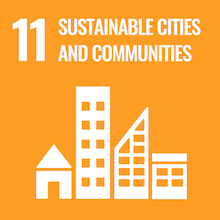
Solar energy is the power that comes from the sun. By collecting solar radiation, it can be used in many ways or converted into useful energy. Solar energy is created by nuclear fusion that takes place in the sun. It is necessary for life on Earth, and can be harvested for human uses such as electricity. The potential for solar energy is enormous.
A popular method is through solar photovoltaic (PV) systems. Also known as solar panels, these devices get installed to convert sunlight into electricity. Federal tax credits, like the solar investment tax credit (ITC), made these systems more affordable. And when you also consider the benefits of solar energy, these factors led to a significant increase in residential and commercial solar panel system installations over the past years.
Solar energy is expected to become increasingly attractive as a renewable energy source because of its inexhaustible supply and its nonpolluting character, in stark contrast to the finite fossil fuels coal, petroleum, and natural gas. It is a renewable source of energy. You never have to worry about rising fossil fuel prices or the environmental impact of burning fossil fuels.

Why Use AK Solar Power for Your Business?
- Reduces energy bills for your business.
You can’t run your business without power. Solar energy lowers your energy bills. How much you save depends on your system’s size and energy use. - Solar Incentive.
Any Tax credits & benefits. - Winning more customers.
A go-green initiative may not be your main motivation for switching to commercial solar energy, but consumers are attracted to businesses with a sustainability commitment. - Improving employee satisfaction.
Employees respond favorably to sustainable efforts and many prefer to work for sustainability-minded businesses - Return on Investment less than 10 years.
Our commercial solar installations have an average payback period of five to six years.
The advantages of solar power for businesses can make them a smart decision. By installing solar, your business will be able to lock in electricity prices and reduce reliance on an unpredictable expense. Going solar makes it easier for companies to budget and plan for the future.

Safety
Installing solar panels and systems can be risky. Workers in the solar industry face various risks, like:
- high working area on the rooftops
- Electrocution or any electric hazards
- Site situation
- Cuts
Because of the risks that businesses and workers face, the Occupational Safety and Health Administration (OSHA) requires employers to have safety training and protection for their employees. Many solar installation companies have taken OSHA’s requirements a step farther and created their own manuals. Therefore, The good plan is required for the following items:
- Equipment to use for safe lifting and handling of solar panels
- Type and size of ladders and scaffolding
- Fall protection for rooftop work
- Personal protective equipment (PPE)
- Covering the solar array with an opaque sheet to block the sun’s light.
- Treating wiring coming from a solar PV system and assuming all wires are live.
- Using a meter or circuit test device to ensure circuits are de-energized before working on them.
- Locking out power on systems that can be locked out and Tag all circuits.
- Never disconnecting PV module connectors or other associated PV wiring when it’s under load.

Electrical Efficiency
The conversion efficiency of a photovoltaic (PV) cell, or solar cell, is the percentage of the solar energy shining on a PV device that is converted into usable electricity. Improving this conversion efficiency is a key goal of research and helps make PV technologies cost-competitive with conventional sources of energy.
Not all of the sunlight that reaches a PV cell is converted into electricity. In fact, most of it is lost.
Multiple factors in solar cell design play roles in limiting a cell's ability to convert the sunlight it receives. Designing with these factors in mind is how higher efficiencies can be achieved.
FACTORS AFFECTING CONVERSION EFFICIENCY
- Reflection
- Recombination
- Temperature
- Wavelength

Carbon Reduction
Whenever you can, advocate for clean solar alternatives to fossil fuels. Carbon offsetting should not be done in place of taking steps to reduce one’s carbon footprint. Carbon offsetting and carbon footprint reduction should be done in tandem. Offsetting the amount which you are not able to avoid empowers you to take full responsibility for your carbon pollution, which is your contribution to climate change.
Renewable energy promises sources of power without carbon emissions but several challenges. To solve the challenge of transmitting electricity from remote locations, high voltage direct current (HVDC) technology is ideal. Storage is another challenge facing renewable energy.
Renewable energy promises sources of power without carbon emissions but several challenges. To solve the challenge of transmitting electricity from remote locations, high voltage direct current (HVDC) technology is ideal. Storage is another challenge facing renewable energy.


Sustainability on green and Clean energy
Creating sustainable energy design benefits the community & environment
Our aim is to support and contribute more sustainable energy in the future
The UN’s 17 Sustainable Development Goals (SDGs) are the blueprint to achieve a better and more sustainable future for all.
At AK Solar, we are committed to advance the UN SDGs and play our part in helping governments and societies to achieve them. We have identified four UN SDGs as priority focus areas for making a positive contribution through community development initiatives. We have a specific focus on Clean Water and Sanitation (SDG 6), Affordable and Clean Energy (SDG 7), Sustainable Cities and Communities (SDG 11) and Climate Action (SDG 13) and we endeavor to mainstream these goals in our projects.




